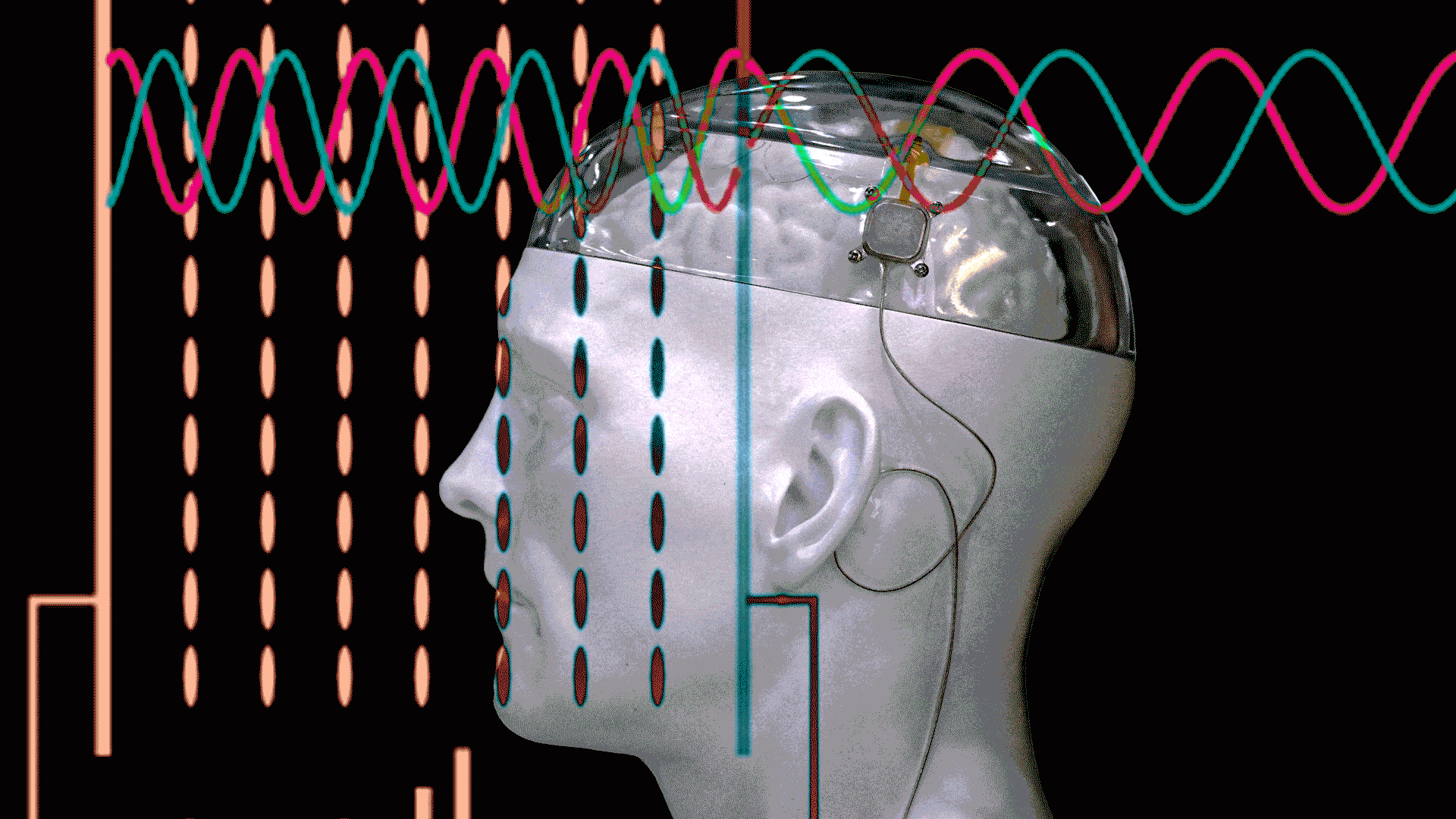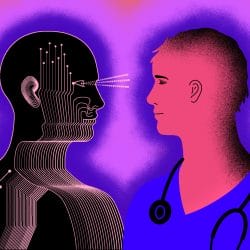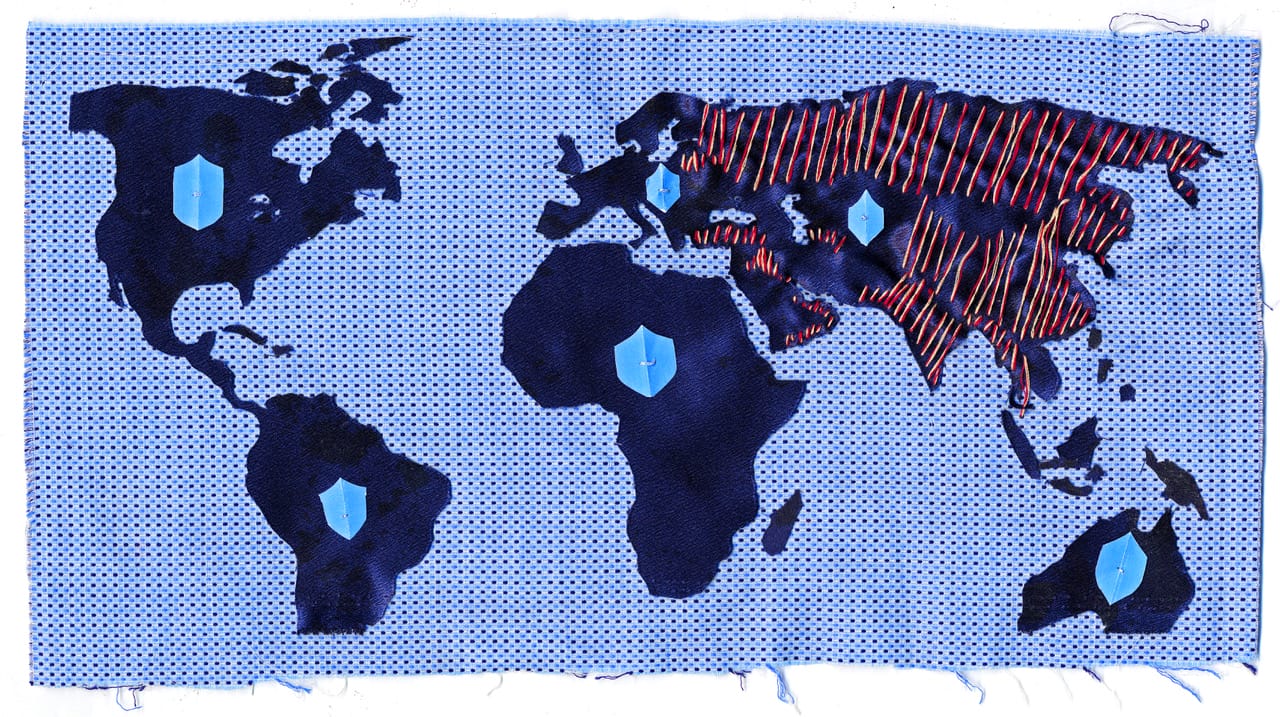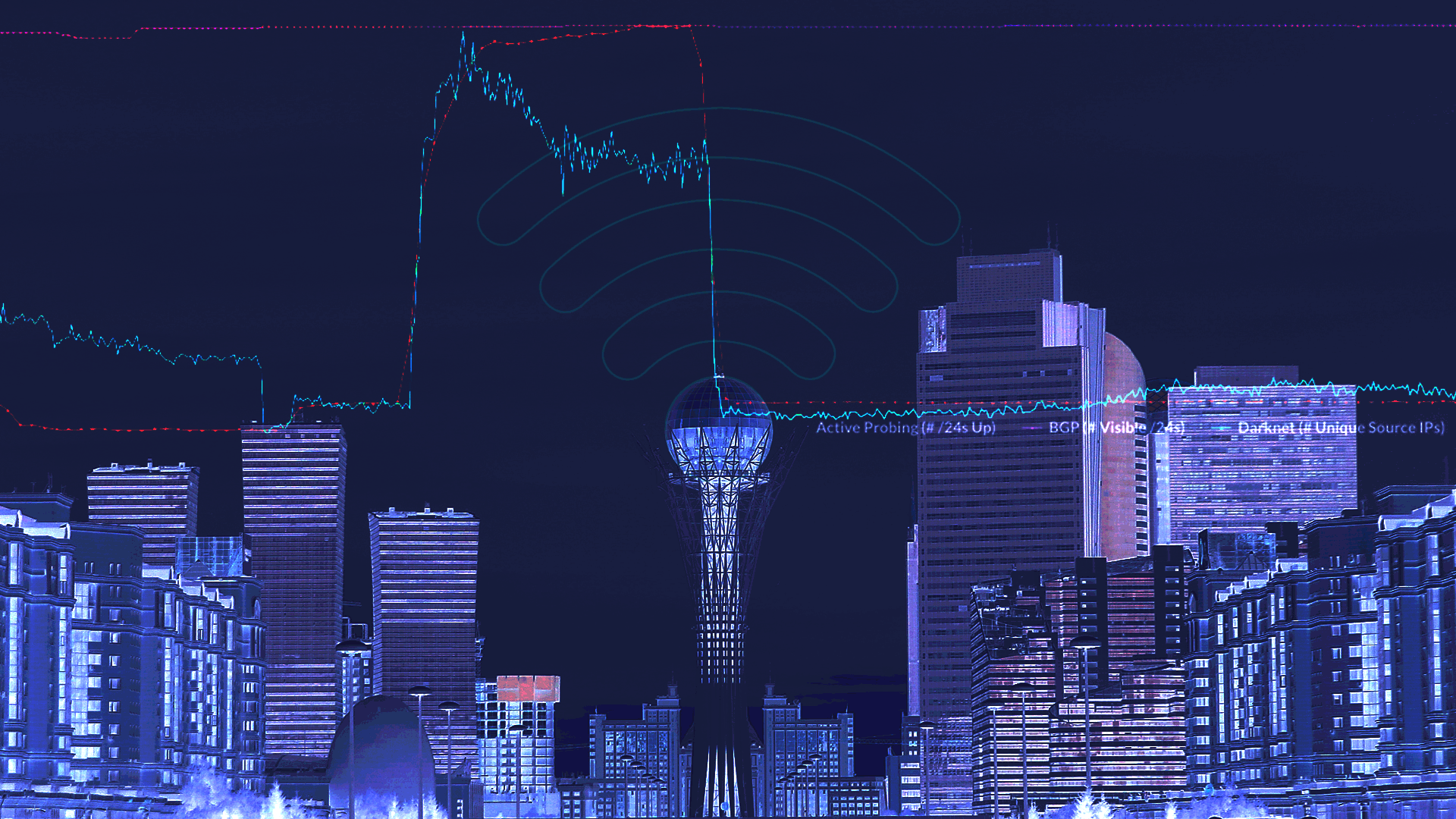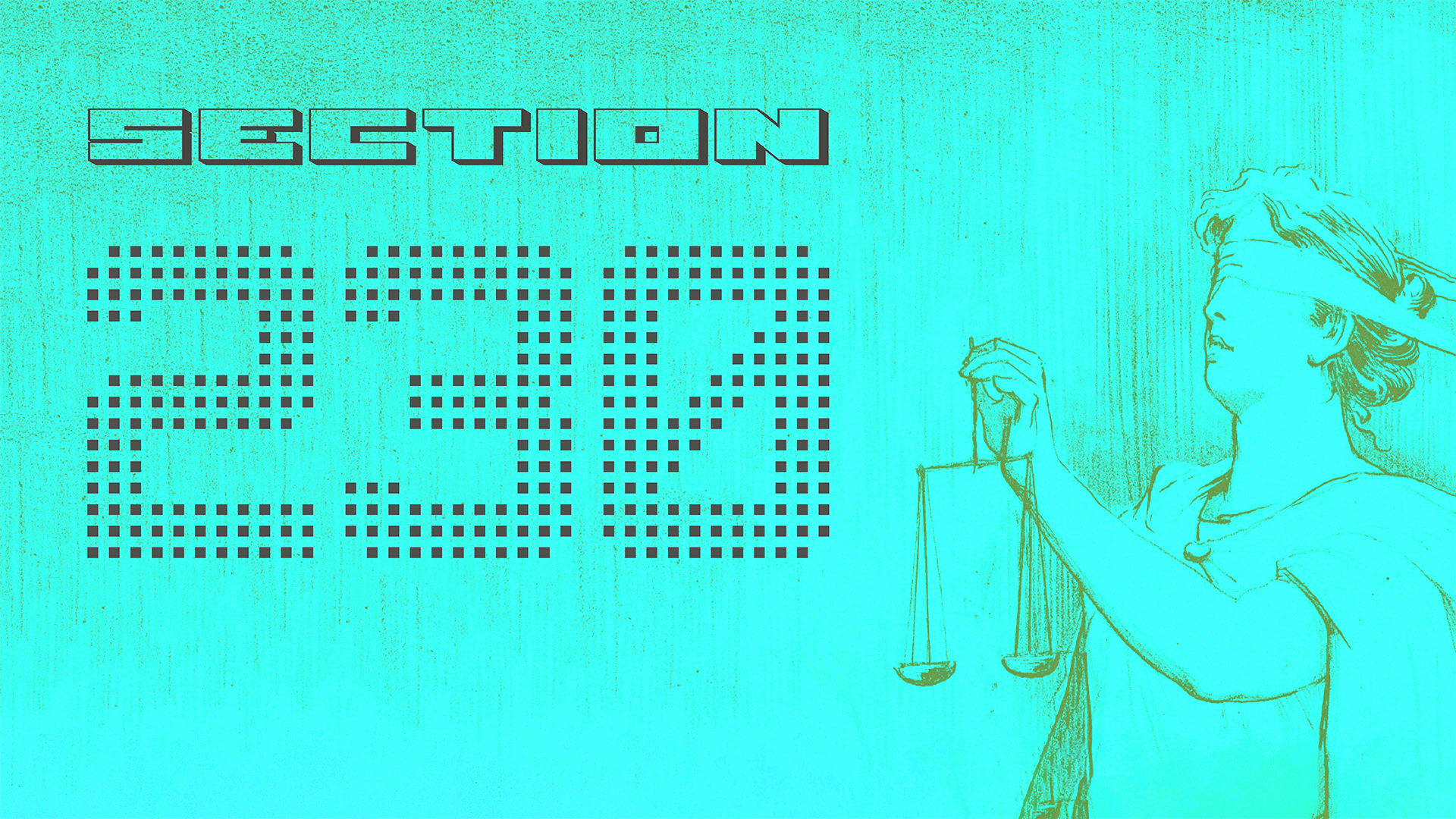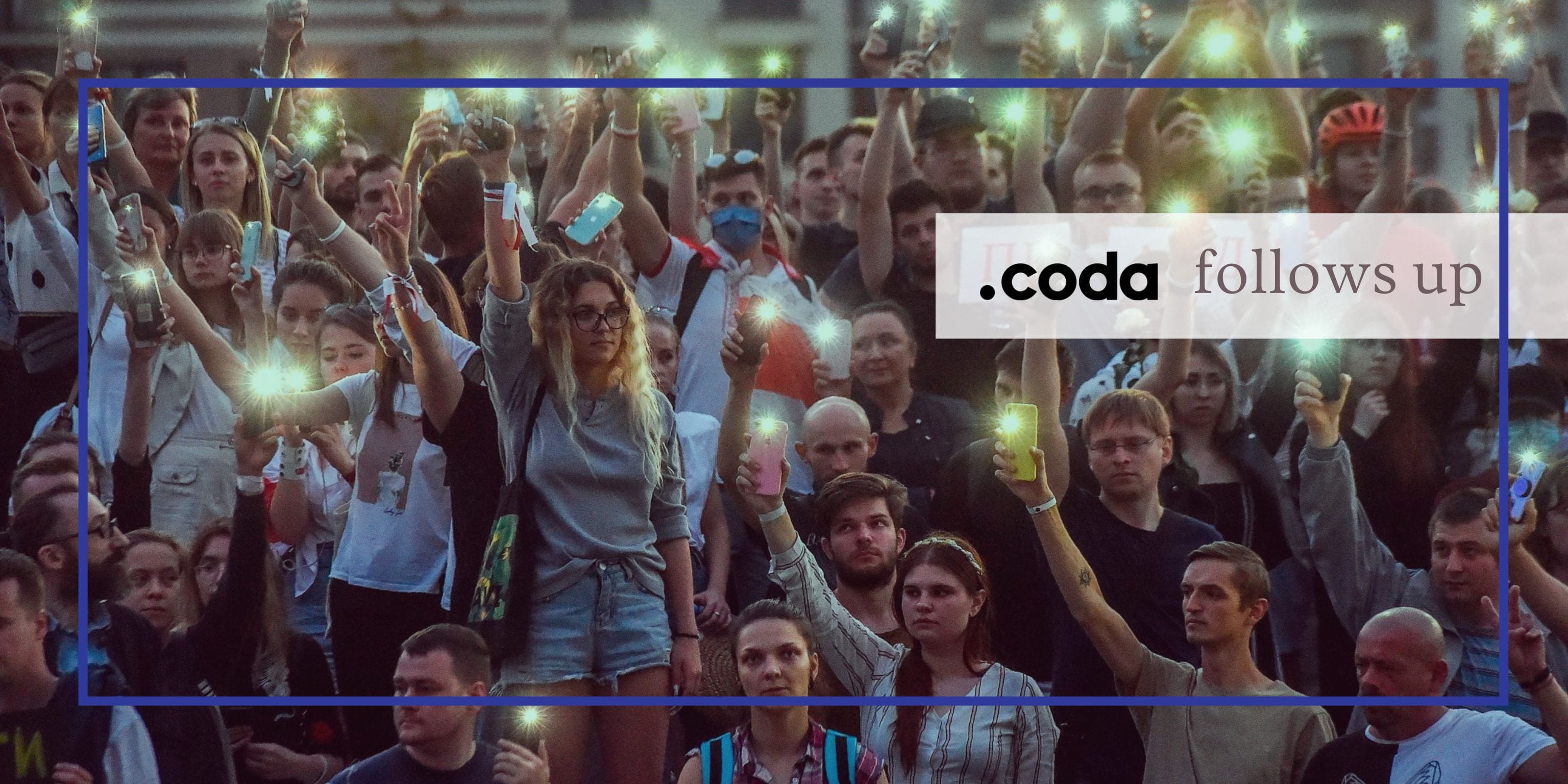Jared Genser and Rafael Yuste are an unlikely pair. Yuste, a professor at Columbia University, spends his days in neuroscience labs, using lasers to experiment on the brains of mice. Genser has traveled the world as an international human rights lawyer representing prisoners in 30 countries. But when they met, the two became fast friends. They found common ground in their fascination with neurorights – in “human rights,” as their foundation’s website puts it, “for the Age of Neurotechnology.”
Together, they asked themselves — and the world – what happens when computers start to read our minds? Who owns our thoughts, anyway? This technology is being developed right now — but as of this moment, what happens to your neural data is a legal black box. So what does the fight to build protections for our brains look like? I sat down with Rafael and Jared to find out.
This conversation has been edited for length and clarity.
Q: Rafael, can you tell me how your journey into neurorights started?
Rafael: The story starts with a particular moment in my career. It happened about ten years ago while I was working in a lab at Columbia University in New York. Our research was focused on understanding how the cerebral cortex works. We were studying mice, because the mouse brain is a good model for the human brain. And what we were trying to do was to implant images into the brains of mice so that they would behave as if they were seeing something, except they weren’t seeing anything.
Q: How did that work?
Rafael: We were trying to take control of the mouse’s visual perception. So we’d implant neurotechnology into a mouse using lasers, which would allow us to record the activity of the part of the brain responsible for vision, the visual cortex, and change the activity of those neurons. With our lasers, we could map the activity of this part of the brain and try to control it.
These mice were looking at a screen that showed them a particular image, of black and white bars of light that have very high contrast. We used to talk, tongue-in-cheek, about playing the piano with the brain.
We trained the mice to lick from a little spout of juice whenever they saw that image. With our new technology, we were able to decode the brain signals that correspond this image to the mouse and — we hoped — play it back to trick the mice into seeing the image again, even though it wasn’t there.
Q: So you artificially activated particular neurons in the brain to make it think it had seen that image?
Rafael: These are little laboratory mice. We make a surgical incision and we implant in their skull a transparent chamber so that we can see their brains from above with our microscope, with our lasers. And we use our lasers to optically penetrate the brain. We use one laser to image, to map the activity of these neurons. And we use a second laser, a second wavelength, to activate these neurons again. All of this is done with a very sophisticated microscope and computer equipment.
Q: So what happened when you tried to artificially activate the mouse’s neurons, to make it think it was looking at the picture of the black and white bars?
Rafael: When we did that, the mouse licked from the spout of juice in exactly the same way as if he was looking at this image, except that he wasn’t. We were putting that image into its brain. The behavior of the mice when we took over its visual perception was identical to when the mouse was actually seeing the real image.
Q: It must have been a huge breakthrough.
Rafael: Yes, I remember it perfectly. It was one of the most salient days of my life. We were actually altering the behavior of the mice by playing the piano with their cortex. We were ecstatic. I was super happy in the lab, making plans.
And then when I got home, that’s when it hit me. I said, “wait, wait, wait, this means humans will be able to do the same thing to other humans.”
I felt this responsibility, like it was a double-edged sword. That night I didn’t sleep, I was shocked. I talked to my wife, who works in human rights. And I decided that I should start to get involved in cleaning up the mess.
Q: What do you mean by that?
Rafael: I felt the responsibility of ensuring that these powerful methods that could decode brain activity and manipulate perception had to be regulated to ensure that they were used for the benefit of humanity.
Q: Jared, can you tell me how you came into this?
Jared: Rafael and I met about four years ago. I’m an international human rights lawyer based in Washington and very well known globally for working in that field. I had a single hour-long conversation with Rafa when we met, and it completely transformed my view of the human rights challenges we’ll face in this century. I had no idea about neurotechnologies, where they were, or where they might be heading. Learning how far along they have come and what’s coming in just the next few years — I was blown away. I was both excited and concerned as a human rights lawyer about the implications for our common humanity.
Q: What was your reaction when you heard of the mouse experiment?
Jared: Immediately, I thought of The Matrix. He told me that what can be done in a mouse today could be done in a chimpanzee tomorrow and a human after that. I was shocked by the possibilities. While implanting images into a human brain is still far off, there’s every reason to expect it will eventually be possible.
Q: Can you talk me through some of the other implications of this technology?
Jared :Within the next few years, we’re expected to have wearable brain-computer interfaces that can decode thought to text at 75–80 words per minute with 90 percent accuracy.
That will be an extraordinary revolution in how we interact with technology. Apple is already thinking about this—they filed a patent last year for the next-generation AirPods with built-in EEG scanners. This is undoubtedly one of the applications they are considering.
In just a few years, if you have an iPhone in your pocket and are wearing earbuds, you could think about opening a text message, dictating it, and sending it—all without touching a device. These developments are exciting.
Rafael: I imagine that, we’ll be hybrid. And part of our processing will happen with devices that will be connected to our brains, to our nervous system. And this could enhance our perception. Our memories — you would be able to do the equivalent to a web search mentally. And that’s going to change our behavior. That’s going to change the way we absorb information.
Jared: Ultimately, there’s every reason to expect we’ll be able to cure chronic pain disease. It’s already being shown in labs that an implantable brain-computer interface can manage pain for people with chronic pain diseases. By turning off misfiring neurons, you can reduce the pain they feel.
But if you can turn off the neurons, you can turn on the neurons. And that would mean you’ll have a wearable cap or hat that could torture a person simply by flipping a switch. In just a few years, physical torture may no longer be necessary because of brain-computer interfaces.
And If these devices can decode your thoughts, that raises serious concerns. What will the companies behind these technologies be able to do with your thoughts? Could they be decoded against your wishes and used for purposes beyond what the devices are advertised for? Those are critical questions we need to address.
How did you start thinking about ways to build rights and guardrails around neurotechnology?
Rafael: I was inspired by the Manhattan Project, where scientists who developed nuclear technology were also involved in regulating its use. That led me to think that we should take a similar approach with neurotechnology — where the power to read and manipulate brain activity needs to be regulated. And that’s how we came up with the idea of the Neurorights Foundation.
So in 2017, I organized a meeting at Columbia University’s Morningside campus of experts from various fields to discuss the ethical and societal implications of neurotechnology. And this is where we came up with the idea of neurorights — sort of brain rights, that would protect brain rights and brain data.
Jared: If you look at global consumer data privacy laws, they protect things like biometric, genetic, and biological information. But neural data doesn’t fall under any of these categories. Neural data is electrical and not biological, so it isn’t considered biometric data.
There are few, if any, safeguards to protect users from having their neural data used for purposes beyond the intended function of the devices they’ve purchased.
So because neural data doesn’t fit within existing privacy protections, it isn’t covered by state privacy laws. To address this, we worked with Colorado to adopt the first-ever amendment to its Privacy Act, which defines neural data and includes it under sensitive, protected data.
Rafael: We identified five areas of concern where neurotechnology could impact human rights:
The first is the right to mental privacy – ensuring that the content of our brain activity can’t be decoded without consent.
The second is the right to our own mental integrity so that no one can change a person’s identity or consciousness.
The third is the right to free will – so that our behavior is determined by one’s own volition, not by external influences, to prevent situations like what we did to those mice.
The fourth is the right to equal access to neural augmentation. Technology and AI will lead to human augmentation of our mental processes, our memory, our perception, our capabilities. And we think there should be fair and equal access to neural augmentation in the future.
And the fifth neuroright is protection from bias and discrimination – safeguarding against interference in mental activity, as neurotechnology could both read and alter brain data, and change the content of people’s mental activity.
Jared: The Neurorights Foundation is focused on promoting innovation in neurotechnologies while managing the risks of misuse or abuse. We see enormous potential in neurotechnologies that could transform what it means to be human. At the same time, we want to ensure that proper guardrails are in place to protect people’s fundamental human rights.








